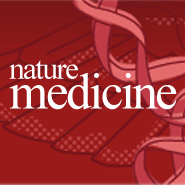
“There is a lack of consensus on the role of selective cannabinoids for the treatment of neuropathic pain (NP). Guidelines from national and international pain societies have provided contradictory recommendations. The primary objective of this systematic review and meta-analysis (SR-MA) was to determine the analgesic efficacy and safety of selective cannabinoids compared to conventional management or placebo for chronic NP.
METHODS:
We reviewed randomized controlled trials that compared selective cannabinoids (dronabinol, nabilone, nabiximols) with conventional treatments (eg, pharmacotherapy, physical therapy, or a combination of these) or placebo in patients with chronic NP because patients with NP may be on any of these therapies or none if all standard treatments have failed to provide analgesia and or if these treatments have been associated with adverse effects. MEDLINE, EMBASE, and other major databases up to March 11, 2016, were searched. Data on scores of numerical rating scale for NP and its subtypes, central and peripheral, were meta-analyzed. The certainty of evidence was classified using the Grade of Recommendations Assessment, Development, and Evaluation approach.
RESULTS:
Eleven randomized controlled trials including 1219 patients (614 in selective cannabinoid and 605 in comparator groups) were included in this SR-MA. There was variability in the studies in quality of reporting, etiology of NP, type and dose of selective cannabinoids. Patients who received selective cannabinoids reported a significant, but clinically small, reduction in mean numerical rating scale pain scores (0-10 scale) compared with comparator groups (-0.65 points; 95% confidence interval, -1.06 to -0.23 points; P = .002, I = 60%; Grade of Recommendations Assessment, Development, and Evaluation: weak recommendation and moderate-quality evidence). Use of selective cannabinoids was also associated with improvements in quality of life and sleep with no major adverse effects.
CONCLUSIONS:
Selective cannabinoids provide a small analgesic benefit in patients with chronic NP. There was a high degree of heterogeneity among publications included in this SR-MA. Well-designed, large, randomized studies are required to better evaluate specific dosage, duration of intervention, and the effect of this intervention on physical and psychologic function.”






 “Extensive basic science research has identified the potential therapeutic benefits of active compounds extracted from the Cannabis sativa L. plant (the cannabinoids). It is recognized that a significant proportion of patients suffering with the debilitating symptoms of pain and spasticity in multiple sclerosis or other conditions smoke cannabis despite the legal implications and stigma associated with this controlled substance. GW Pharmaceuticals have developed Sativex (GW- 1000-02), a combined cannabinoid medicine that delivers and maintains therapeutic levels of two principal cannabinoids, delta-9-tetrahydrocannabinol (THC) and cannabidiol (CBD), via an oromucosal pump spray, that aims to minimize psychotropic side effects.”
“Extensive basic science research has identified the potential therapeutic benefits of active compounds extracted from the Cannabis sativa L. plant (the cannabinoids). It is recognized that a significant proportion of patients suffering with the debilitating symptoms of pain and spasticity in multiple sclerosis or other conditions smoke cannabis despite the legal implications and stigma associated with this controlled substance. GW Pharmaceuticals have developed Sativex (GW- 1000-02), a combined cannabinoid medicine that delivers and maintains therapeutic levels of two principal cannabinoids, delta-9-tetrahydrocannabinol (THC) and cannabidiol (CBD), via an oromucosal pump spray, that aims to minimize psychotropic side effects.” 

